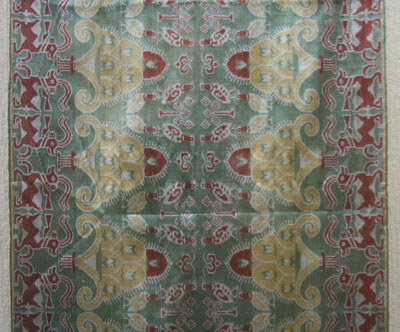Decorative Designs in Chinese Art 中国文物的纹饰
Textiles 织物 Early Period 早期
Click on any word to see more details.
Early Period 早期
From jade artifacts in the shape of silkworms and a wide vocabulary relating to silk production and clothing, it is clear that silk was popular in the Xia, Shang, and Zhou dynasties. Production was standardized, labor specialized, and work was supervised by government officials. In the Spring and Autumn and the Warring States periods a wider variety of silk artifacts were produced. Suzhou was established as the main center of silk production. A reproduction of a brocade from the Warring States Period is shown below.
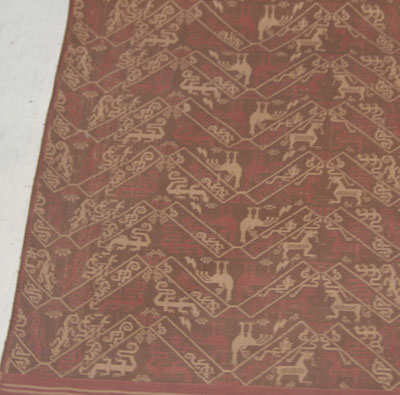
In 1972 a Han dynasty tomb was discovered in the No. 1 Mawang Pit 马王堆. Included in the discoveries were silk artifacts with fine color printed designs. The designs included plants with vines, flower buds, and bunches of leaves arranged in intricate patterns. More than 20 different designs were found in total. The designs were most likely created with openwork printing blocks or from carved relief printing plates. The picture below shows printed silk fabric from the Western Han (206 BCE — 25 CE).
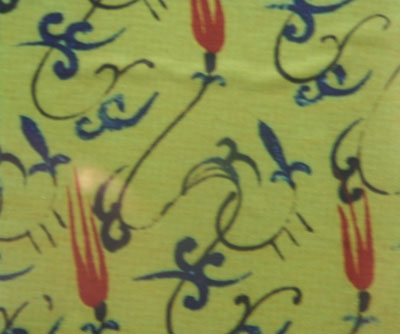
The brocade below, discovered in Minfeng, Xinjiang, from the Eastern Han, has a longevity design.
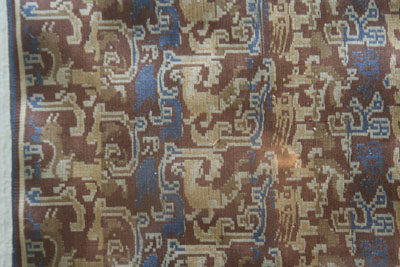
The brocade below, excavated from Astana, Xinjiang in the Northern Dynasties, has a Kui dragon 夔 design.
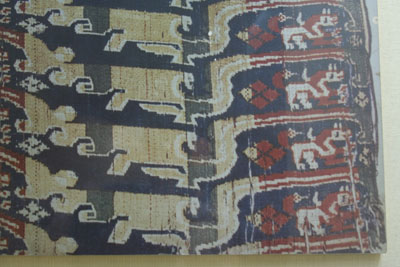
The brocade below, also excavated from Astana, Xinjiang in the Northern Dynasties, has a tree lamp design.
Chinese
Pinyin English
